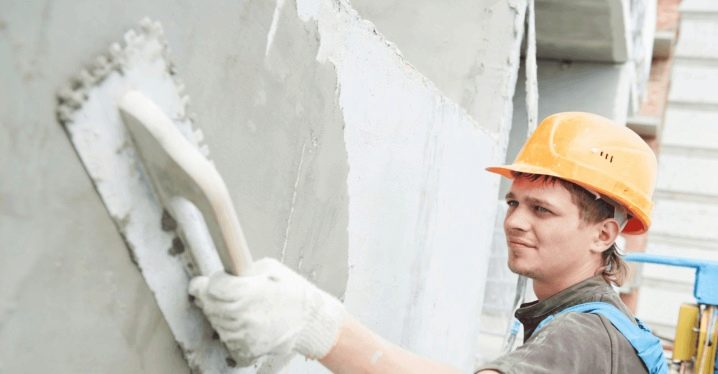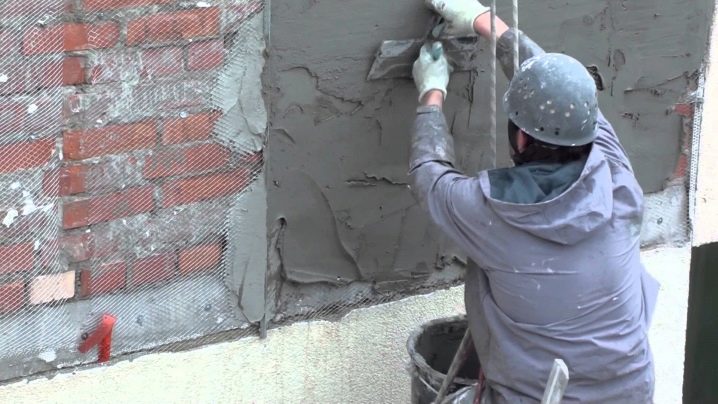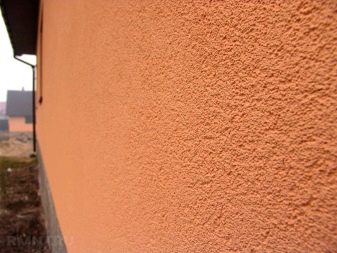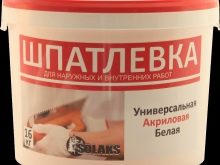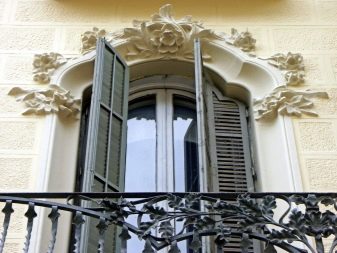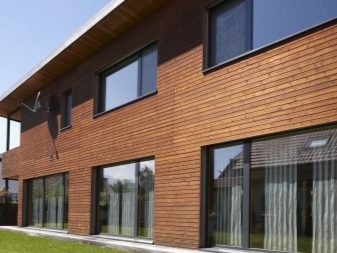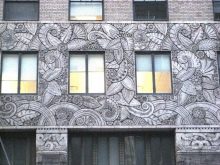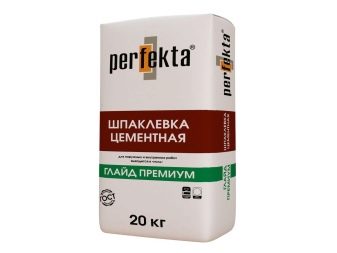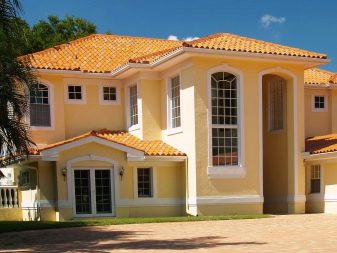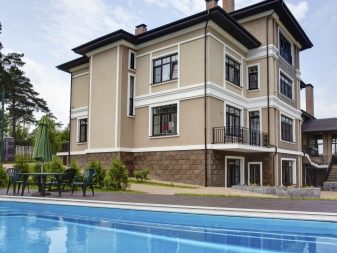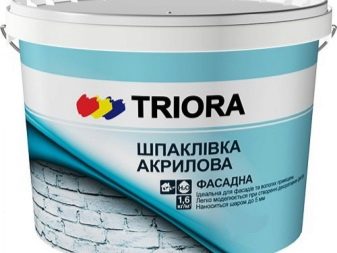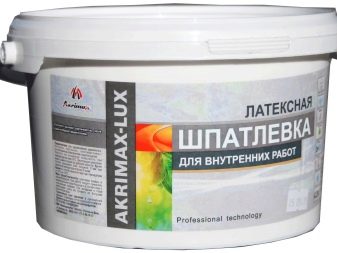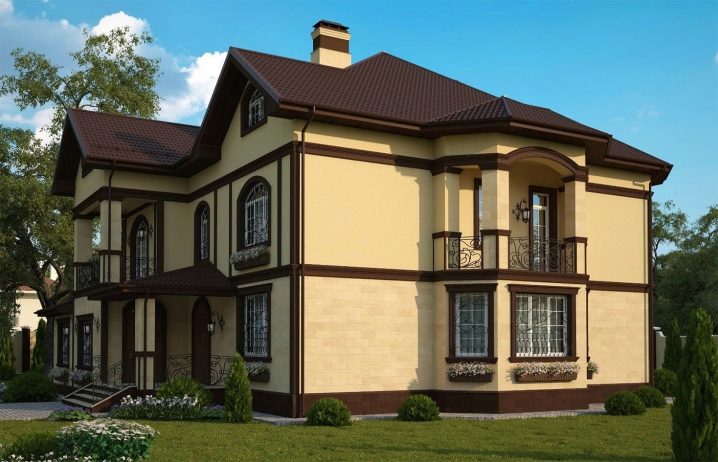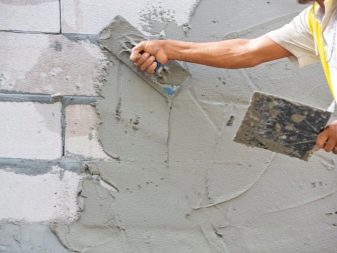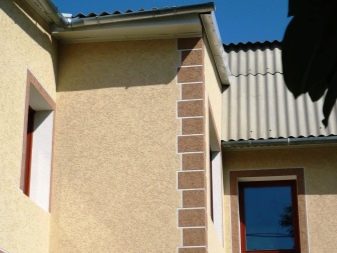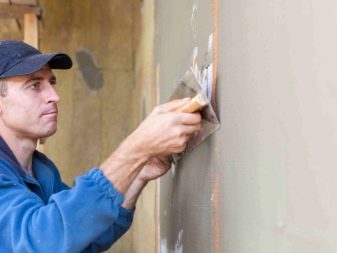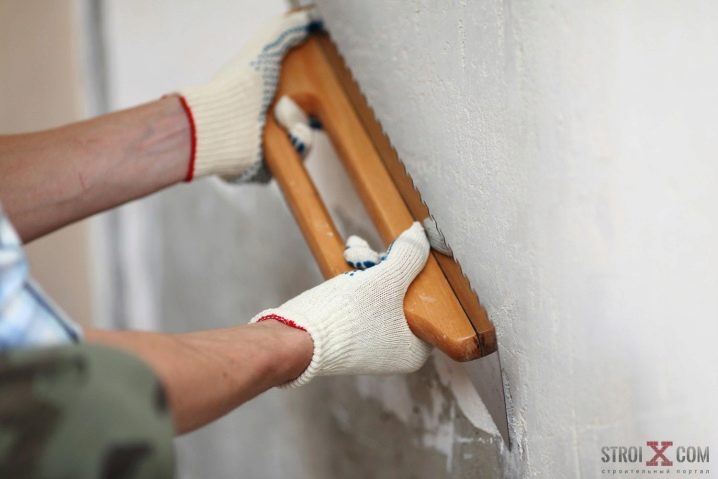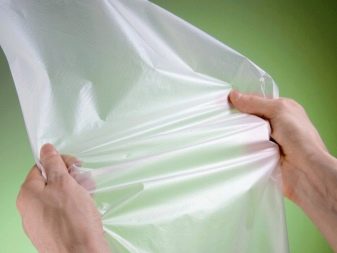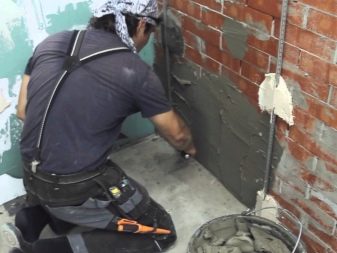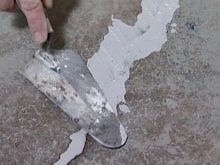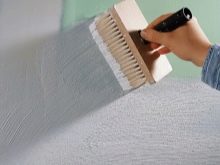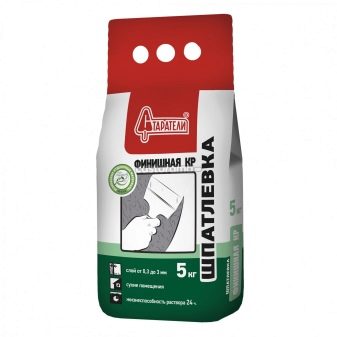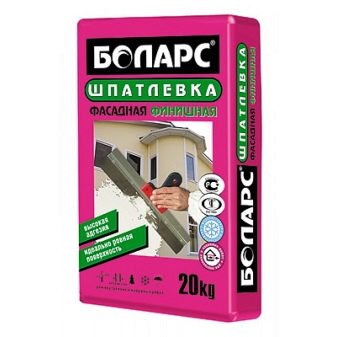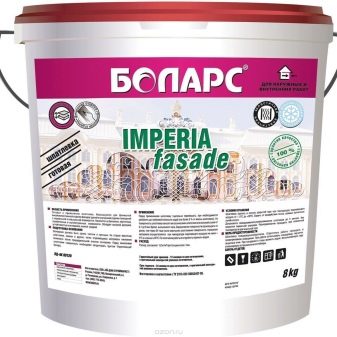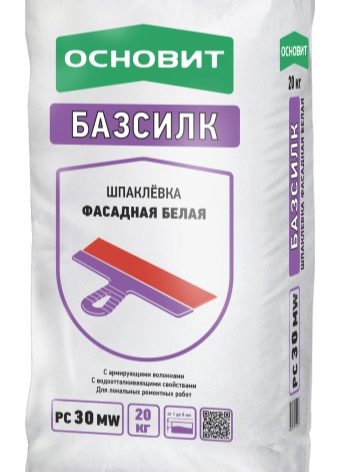Subtleties of the choice of facade putty
In order for your home to look as attractive from the outside as it does inside, it is important to carry out all the necessary activities for this. The most basic will be putty uneven surface with a view to its alignment. In order for the result to be the one that you want, it is important not only to comply with the technology of work, but also to choose the right putty.
Special features
Facade plaster can be used on brick or concrete. Shpaklyuya these surfaces, you can even them and protect them from adverse natural factors. When performing any outdoor work, it does not do without chipping, the corners of the brick and other things, and in order to hide all these and flaws, and putty is used.
Due to the different conditions for which the putty is chosen, its types are different. Frost-resistant is characterized by maximum surface protection, even in very cold weather. If you properly putty the wall, then for a long time you will not need to correct any flaws caused by time. On top of this putty for facades is best to apply waterproof plaster.
If you want your home to always be warm and cozy, it is important to correctly put a layer of putty on the outside, which will provide the desired effect. Facade putty will help to give any exterior surface a perfect appearance so that you can make a decorative finish on top. How exactly to decorate the walls of a house or another building is a minor issue, the main thing is to hide all the flaws, insulate the walls and prepare them for further decoration.
Technical characteristics of facade plaster must be properly selected under the type of work that you plan. Non-observance of such nuances can turn back in vain the spent time and low-quality repair. When planning a plaster finish, you need to know what layer thickness is most optimal for a certain surface.Most often it is determined by irregular places, focusing on the convex points and depressions. The thinner the layer, the faster it dries, but the faster it deforms from external factors.
Species
Since exterior walls can have their own characteristics, mixtures for them also differ.
The most common are:
- Base putty;
- Finishing;
- Universal;
- Decorative;
- Putty wood.
If we talk about the basic putty, which is also called the starting one, then its main task is to level the surface. Finishing differs in more liquid consistence and helps to level a surface before decorative furnish. It is not too durable, but it is easy to work with it, it is convenient to grind and plan further finishing. If we talk about a universal putty, then it is similar to the first two types, but is not used for finishing the facade.
If we are talking about decorative putty, then use it for work with stucco and textured elements in the decor of the outer part of the room. If you have wooden elements on the external facade, then you need to work with them with the help of putty for wood.It helps to protect the tree from precipitation and makes the layer of wood very smooth.
It is possible to apply paint, mosaic, plaster, tile, enamel on the facade putty, and all this will look beautiful if the walls were previously properly prepared and aligned.
Putty is also distinguished on the basis. Distinguish plaster on cement and polymer base. For the design of the facade is ideal first type, because it is resistant to moisture and shows itself well at low temperatures. For walls it is a great option, because after drying the material becomes very durable and does not crack, and therefore protects the internal heat.
Decorative shades can be characterized by different shades, which is possible due to the presence in the composition of various chemicals. You can find yellowish, gray and beige putty. Earlier it was also white, but now it is not being made due to the high cost of the components.
When it comes to polymer-based putties, among them are acrylic and latex. The acrylic version is suitable for both basic and finishing work with external walls.Latex putty for external facades are not used. If we talk about the advantages of facade plaster, then they include strength, durability, ductility, quick drying. They do not shrink or smell. Of the minuses can be noted the inability to combine this look with some building materials.
Subtleties of choice
To choose a putty, you need to choose the right composition. In view of the serious requirements that face this material, it is very important not to be mistaken. Stopping your choice on something concrete, you need to pay attention to the composition of the material, from which will depend on the degree of flatness and strength of the finished coating.
If we talk about the cement composition, it has a more granular and large structure. It is best to work with ready-made mixtures of pasty character.
If the mixture is of high quality, then we can distinguish its features:
- Fast setting and crack free;
- Ease of use;
- Long preservation of plastic properties;
- It is well combined with paints and varnishes, which will be used over the putty surface.
It is cement plaster that is not afraid of moisture and low temperatures.As part of it has quartz sand, marble dust and lime powder. The composition may be chemical elements used to achieve better technical characteristics.
Polymer putty can be with acrylic or latex basic. Latex option for external use is not used. Acrylic putty can serve as a base and can be used as a finishing finish. Its convenience is that it is not necessary to dilute the mixture with water.
Almost all the putty is now available as a dry and ready-mixed. Finished versions are sold in special containers tightly closed with a lid. If dry mix is used, then for work it needs to be dissolved with water, and then to use. The volume of packages may be different, and their choice depends on the number of works that you have to perform. Being engaged in dilution of the mixture independently, it is best to focus on the recommendations of the manufacturer, so that the composition turned out to be the most convenient for work.
To mix well the composition with water, it is best to use a special nozzle on the drill for mixing construction mixtures.When everything is ready and the putty gets a creamy consistency, you need to let it brew for a few minutes. The prepared mass can be used for three hours, after which it will harden and will not be suitable for further use. This is important to know in order to prepare optimally sized portions of putty.
Usage tips
Cement putty, which will be used for finishing work, must be properly prepared, only after that you can begin to apply the first layer. Despite the fact that the applied mass is waterproof and frost-resistant, in most cases a second layer of putty will be needed.
If you want to revet a new house that was just built, do not rush into this business. It is best to give the building time to shrink (about a year), and only after that to carry out all subsequent actions. It is important to take into account the temperature regime - a range from five to twenty degrees of heat will be suitable for work.
Making a home decoration with your own hands is absolutely real., most importantly, to know the method of the process and not to rush to complete all tasks.The drying time of the solution will vary depending on temperature, humidity, and the presence of precipitation. It is not recommended to work at negative temperatures, because the putty compound is mixed with water, and the winter coolness will not allow the solution to dry, it will just start to freeze.
For those who do not know whether it is possible to putty in the rain, it is important to say that direct sunlight and moisture in the form of precipitation should not fall on the working wall, because it is covered with polyethylene immediately after the execution of works. To remove the film is possible only when everything is completely dry. Due to the fact that the cement solution has a vapor-permeable structure, it will not take too long.
Work must begin with cleaning all work surfaces from dust and dirt. The next step will be applying a primer with deep penetration, which should be fully dry.
Work with the facade begins with the fact that significant cavities, cracks and so on are closed with the help of starting putty. Once everything is completely dry, you can take to the next stage. The putty is applied to the wall section and leveled with a spatula.For this type of work applies exclusively clean version of the facade putty, without impurities and additives.
Once everything is dry, you need to primed the finished surface and after drying, you can apply new layers. The thickness of each layer should be about four millimeters. When the process is completed, a finishing coat is applied to the base putty, leveled and ground after drying.
Manufacturers
Many people believe that building mixes are the most important thing in filling, and there is a part of rational grain here. Eminent manufacturers pay more attention to the technologies by which they produce their products, and there are no surprises to expect from them.
If we talk about the most popular options, then they include the company "Miners". They prepare high-quality mixes, but at the same time the cost of them remains quite moderate. This material will be useful to those who first encountered this kind of work and wants to master this craft. In addition to the process of putty, you can use the solution for decoration, adding paint to the composition. This option will be cheaper than painting the facade with any paint, even the cheapest.
It is important to say that this solution does not shrink. The maximum coating layer is one centimeter, and it dries within twenty-four hours.
Firm "Bolars" manufactures products slightly higher than the "Miners" for the price, and about the same in quality. This is a putty with a high degree of moisture resistance, which can be applied with a layer up to ten centimeters. If you work with a dry mix, then it will dry after twenty-four hours. The finished paste will be completely dry in eight hours.
As for the putty firm Volma, a 25 kg bag will cost a bit more than a Bolars. There is also a product "Volma aquastard". These are mixtures based on cement putty and white cement. When it is dry, the surface is white, which is important for subsequent dyeing with light colors.
"Found basilk" It is a versatile material that can treat surfaces both indoors and outdoors. You can buy it in paper bags whose weight is 20 kg. The basis of the mixture is cement, but it contains special additives with reinforcing microfiber for better strength.
How to putty the facade of the house, see the following video.

